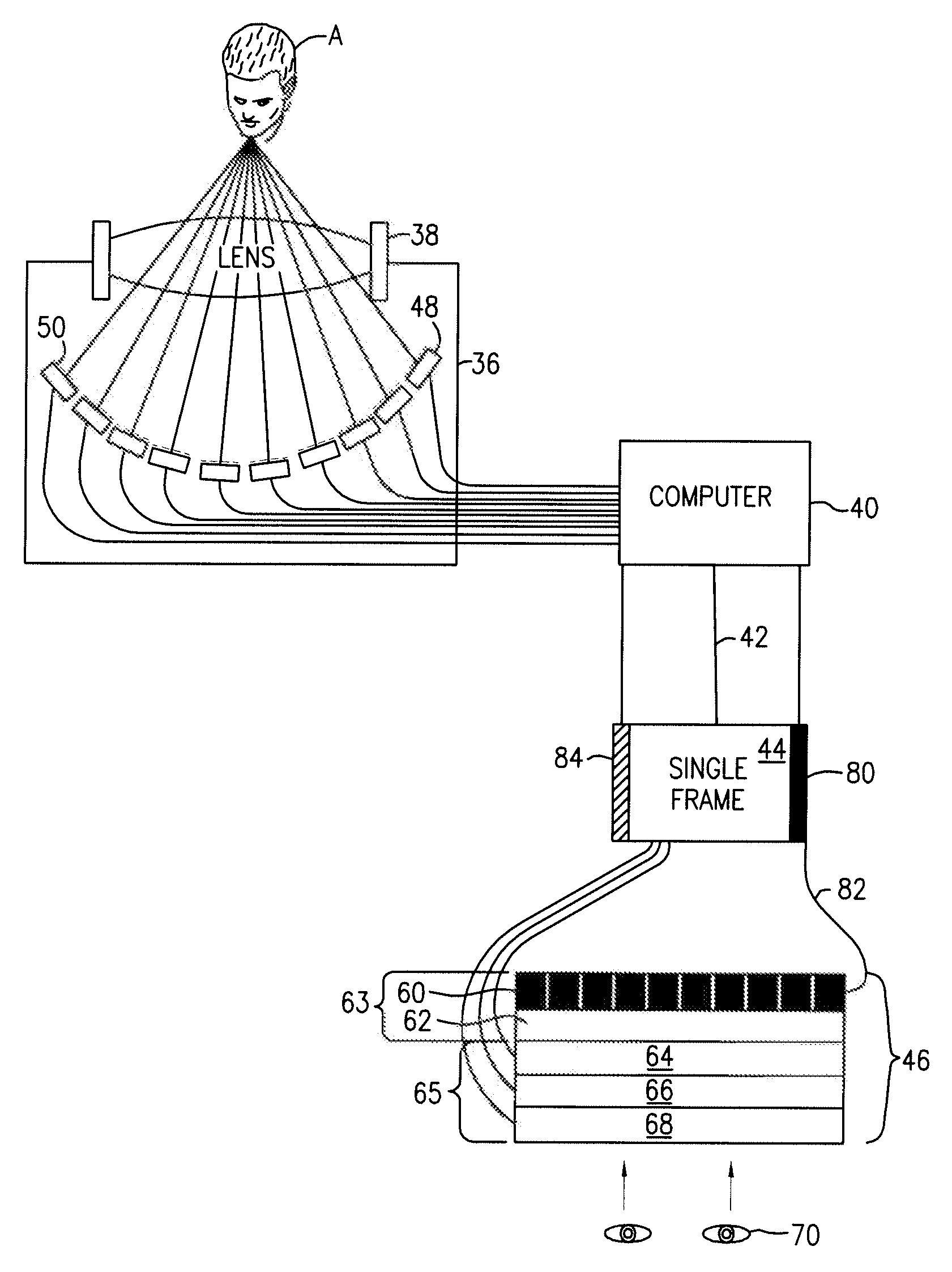Advance in Transmission and Display of Multi-Dimensional Images for Digital Monitors and Television Receivers using a virtual lens
a virtual lens and multi-dimensional image technology, applied in the field of new virtual lenses for transmitting stereoscopic images, can solve the problems of limited techniques, 987 u.s. patents, and limited techniques
- Summary
- Abstract
- Description
- Claims
- Application Information
AI Technical Summary
Problems solved by technology
Method used
Image
Examples
Embodiment Construction
[0016]Typical prior art cameras for obtaining stereographic photographs are well known and are schematically indicated in prior art FIG. 1. They generally comprise a standard commercial camera 10 mounted on a suitable non-illustrated structure for traversing a path about one or more subject images 12, 14 and 16, film 11, and an overlying lenticular screen 13. As shown in FIG. 1, camera 10 is capable of being moved between dotted-line positions along an arc whose radii intersect at point 18, the central point of any particular picture to be taken. The different relative positions of the camera while photographing the object, or the difference in point of view, i.e., parallax, of the camera as it traverses its arc is illustrated by the rays extending, from each of the cameras. The relative rays are designated by dotted lines with respect to the left position of the camera, by solid lines with respect to the central position of the camera, and by dash lines with respect to the right po...
PUM
 Login to View More
Login to View More Abstract
Description
Claims
Application Information
 Login to View More
Login to View More - R&D
- Intellectual Property
- Life Sciences
- Materials
- Tech Scout
- Unparalleled Data Quality
- Higher Quality Content
- 60% Fewer Hallucinations
Browse by: Latest US Patents, China's latest patents, Technical Efficacy Thesaurus, Application Domain, Technology Topic, Popular Technical Reports.
© 2025 PatSnap. All rights reserved.Legal|Privacy policy|Modern Slavery Act Transparency Statement|Sitemap|About US| Contact US: help@patsnap.com



